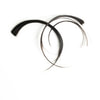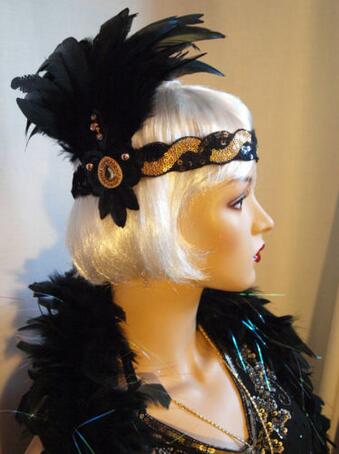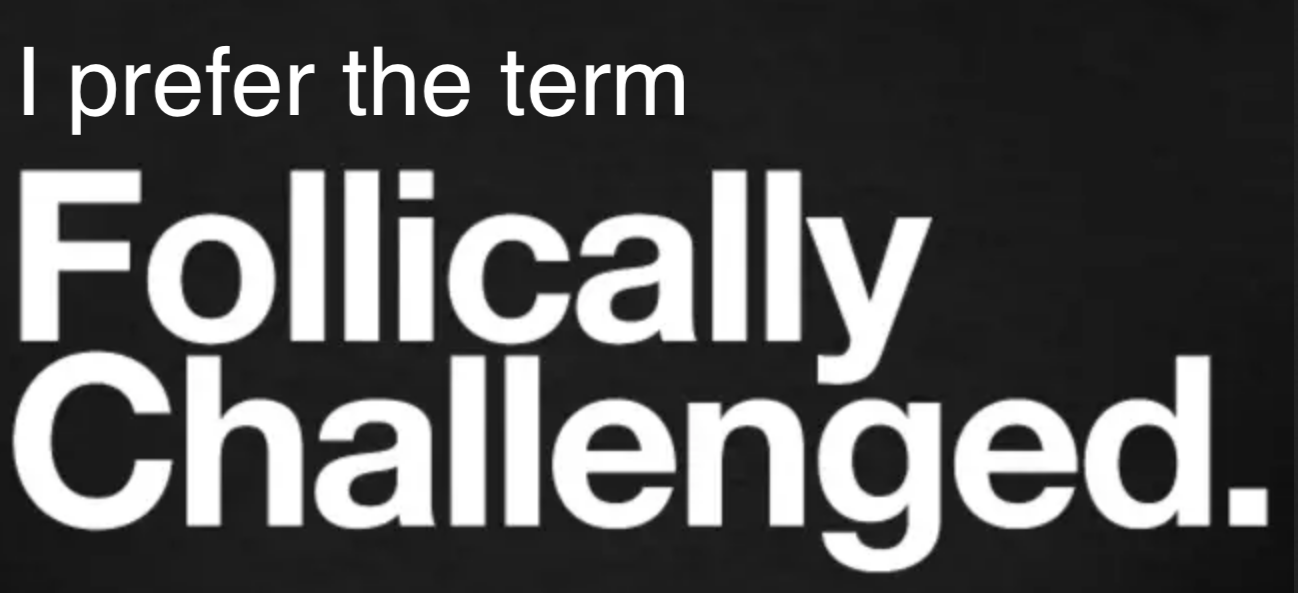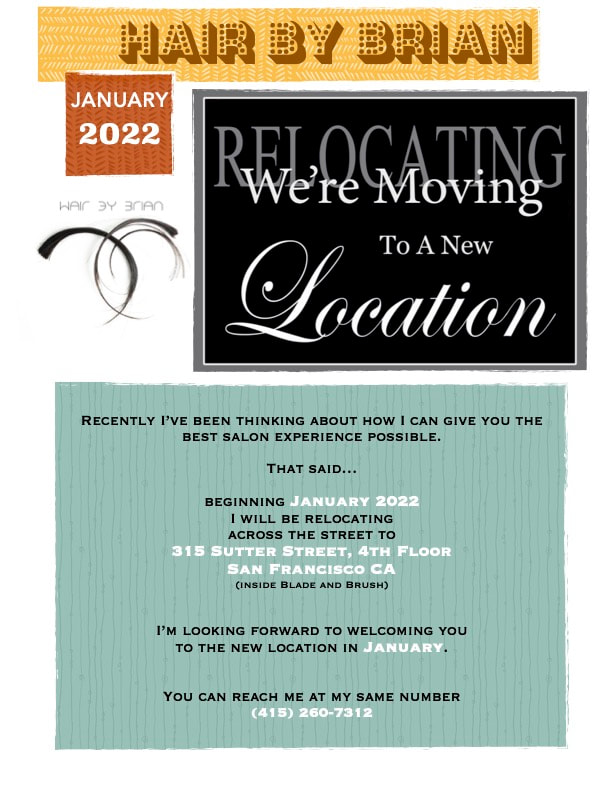|
For just about as long as the human race has had hair, we've been coming up with accessories to adorn it with. The history of hair accessories spans a diverse range of styles on both women and men, from bobby pins to brightly colored beads and everything in between. Though, at the moment, hair accessories are only just having a comeback with flower crowns and scrunchies, there have been times when we couldn't step outside without something in our strands. Whether we're pining over our childhood butterfly clips or trying out the latest trends in headbands, those accessories have a storied history full of intrigue. Who can imagine hair without bows and ribbons, barrettes and pins, hair bands and scrunchies, headbands and hair wraps, or clips and beads? If there were nothing to put in our hair, we'd be stuck with our tresses falling in our faces — and a serious lack of style. From the first known accessories in history of ancient cultures all over the world to the modern day pieces we find ourselves using, functionality and fashion have pretty much always been the main goals. Let's take a look at seven key pieces of hair garb that have brought us to where we are today. 1. Ancient Hair Rings Two gold artefacts thought to be around 3,000 years old have been found near Wrexham. These would most certainly be the precursor to our modern day hair elastics and the scrunchies of the '80s and '90s. Way back in the day (think ancient Europe in the Bronze Age) these rings or bands would be made out of solid gold or clay and lead plated with gold. A similar type of accessory was used in ancient Egypt made out of alabaster, pottery, or jasper. It's hard to imagine a circular band to hold your hair back that isn't flexible, but that was how it went until rubber and elastic fabric was invented. I'm pretty thankful I don't have to walk around with a heavy piece of material holding my hair back these days. 2. Hair Bows And Ribbons Though we typically think of hair bows and ribbons as accessories reserved for women and more specifically little girls, fabric used in the hair goes back to when it was especially popular in the 17th and 18th centuries in Europe and the Americas for both genders. Men's wig ponytails were often tied with a ribbon as seen in all those films set in colonial America. 3. Hairpins Long and ornate hairpins with beads or ornaments hanging from the have been fashionable in many historical contexts. From ancient Roman times where elongated pins were often doubled as containers for perfume or poison to 17th century Japan where kanzashi pins were worn by fashionable ladies, hairpins have served as a way to keep hair tidy and as social status symbols. Eventually, hairpins morphed into what we'd call bobby pins. They first served as a way to keep hair constrained as it was improper for a women to have loose hair showing in Victorian times. They also served as a way to get the finger waves that were so popular in the '40s. 4. Vintage Barrette The more decorative derivative of the bobby pin, barrettes weren't used until the mid-19th century. I remember these were pretty popular in the '80s and '90s, too; my own mother used wear them when I was a kid. 5. Headbands This is another accessory that has its roots in ancient times. Mesopotamian men and women used headbands to keep their hair at bay. In the European Middle Ages, royal woman used metal headbands as a sort of crown. In the early 1800s, it was fashionable to copy the ancient Greek style of wearing headbands, but then hats became increasingly popular. It wasn't until the '20s that headbands starting appearing again, and they haven't really gone out of style since. 6. Decorative Combs Decorative combs are also an accessory that date back to as early as the Stone Age. Many different cultures have used comb-like pieces to secure the hair in place. In more modern times, small hair combs were used as attached to small hat and head pieces in the '50s, and the popular "claw" clips or banana clips made popular in recent decades have their roots in these decorative combs. 7. Hair Beads Beads as a decorative way to adorn braids has long since been an African hair tradition. This look has continued to make its way into modern natural hair trends and styles in Western culture as well. Beads and jewels may not work as a functional way to keep hair fastened, but they continue to be a beloved adornment for hair as a fashion statement. from Bustle
0 Comments
This section is for the "Follically Challenged". There are so many conversations and articles on the topic and I want make sure you are getting good information. This month's article is from Eat This, Not That! One Major Effect of Vitamin D on Hair Loss, New Study Suggests Dermatologists point to one more possible reason to behold this powerful supplement. When you think about ways to manage hair loss, some of the medicated or even surgical options might seem risky… not to mention, expensive. If you've considered what to do about balding, a new study could save you some cash and concern: With all the health buzz around Vitamin D these days, dermatologists were interested to see whether the supplement could address hair loss—an issue that currently affects more than 80% of men and 50% of women around age 50, according to NYU Langone Health. Keep reading for more about the possible link between Vitamin D and some cases of hair loss, and don't miss One Surprising Effect Coffee Has on Your Hair, According to a Dermatologist. Vitamin D plays a part in the hair cycle. In a new study published this week in The Journal of Cosmetic Dermatology, a duo of dermatologists in India stated: "Vitamin D is intricately involved in various signaling pathways of growth and differentiation of hair follicles." Recognizing that Vitamin D has been shown to affect the hair cycle, they set out to conduct their own investigation of Vitamin D as "a potential therapeutic modality in hair loss." Vitamin D and "scarring alopecia" While this specific research team's analysis didn't yield evidence of a super-strong correlation between Vitamin D deficiency and baldness, they refer to one past study that showed an association between low levels of Vitamin D and "scarring alopecia"—a type of balding that affects 3% of both male and female hair loss patients, according to WebMD. Scarring alopecia occurs when hair follicles are permanently damaged and replaced by the development of scar tissue. A brief note on Vitamin D and skin health: A possible explanation for Vitamin D's role in preventing this type of hair loss is that Vitamin D also supports the skin's rejuvenation, which may be a factor in scalp health. Vitamin D helps create more hair follicles. Other beauty and wellness experts help to explain Vitamin D's role in hair restoration—as Raechele Cochran Gathers, M.D. recently stated on an episode of MindBodyGreen's Clean Beauty School podcast: "Vitamin D is one of the fat-soluble vitamins needed for maintaining and creating functioning hair follicles."
(What does it mean for Vitamin D to be fat-soluble? We've got the answer in Never Take Your Vitamin D Without Eating This, Dietitian Says.) 11/26/2021 How Does Ashwagandha Benefit Your Hair?You must have known ashwagandha as an ancient herb that works wonders for your body. But are you aware of the myriad benefits it offers for your hair? Also known as Indian ginseng, ashwagandha has been used for over thousands of years in Ayurveda as a medicinal herb. Besides, it’s a powerful tridosha hara herb that takes care of your complete hair health. Let’s learn more about the wonder herb and its benefits in your hair care. Highlights:
Does Ashwagandha Help With Hair Loss? In Ayurvedic science, it is believed that every human body physiology is the collaboration of three doshas: Vata, Pitta, and Kapha, which exists in a unique ratio in each individual. Vitiation in the ratio of these tridoshas in your body can lead to different dosha-specific ailments, including scalp and hair related problems. To maintain a healthy body, mind, and soul, it is essential to maintain the equilibrium or ratio of these doshas, which govern your overall body and mind functioning. Ashwagandha, which is one of the most powerful Ayurvedic herbs, balances all the three doshas in your body. It is especially a good pacifier of aggravated Kapha and Vata doshas, which in turn helps you stop the hair loss caused due to the imbalance of these doshas. “Ashwagandha as a natural adaptogenic herb, helps in controlling chronic stress and hormonal imbalances, which are the key reasons behind ‘telogen effluvium’ hair loss in your body. Also, the herb benefits all Ayurvedic hair types,” says Dr. Zeel Gandhi, Chief Ayurvedic Doctor at Vedix. Did You Know? The word ‘ashwagandha’ is translated from Sanskrit as ‘ashwa’, meaning a ‘horse’ and ‘gandha’, meaning ‘fragrance’. And, the root of ashwagandha is reminiscent of a horse. Benefits Of Ashwagandha For Hair 1. Relieves Your From Hair Loss An increase in stress hormones such as cortisol affects the proper functioning of your hair follicles, eventually leading to hair loss. Ashwagandha can be an instant solution to manage the cortisol levels in your body and thus control follicle damage and hair loss. The herb has natural mood-boosting properties that minimize your hair loss by keeping your anxiety[1] and stress at bay. “Also, ashwagandha is best known for controlling postpartum hair fall caused by hormonal imbalances in women’’, says Dr. Zeel. 2. Strengthens Your Hair Ashwagandha stimulates the production of DHEA (Dehydroepiandrosterone)[2], a natural hormone in your body that is an ultimate antioxidant. Thus, ashwagandha helps you combat free radicals from your scalp and hair follicles, thereby promoting healthy hair growth. 3. Enhances Your Scalp And Hair Nourishment The flavonoids of ashwagandha are a rich source of protein, vitamin C, iron, glucose, tannins, potassium, and nitrate, which are essential components for healthy hair growth. “Ashwagandha improves blood circulation in your scalp which in turn supports the delivery of the nutrients to your follicles,” says Dr. Zeel. 4. Conditions Your Scalp And Hair The simulation of DHEA (Dehydroepiandrosterone) production caused by ashwagandha can increase the production of collagen and sebum on your scalp. This keeps your scalp and hair texture conditioned while repairing your dry and brittle hair. Also, the collagen and sebum prevent sun damage to your scalp and hair. 5. Controls Your Scalp Irritation With its powerful anti-inflammatory properties, ashwagandha improves the overall health of your hair follicles. It controls scalp ailments such as dandruff, itching, psoriasis, eczema, and other allergies caused by inflammation. 6. Reverses Premature Greying Of Hair You can find an amino acid called ‘Tyrosine’ in ashwagandha that helps in stimulating the melanin production in your hair follicles. This helps you restore the lost melanin and reverse your premature hair greying. How To Use Ashwagandha To Stop Hair Loss? 1. Ayurvedic Hair Care Products You can choose hair care products such as hair oil, shampoo, and conditioner which contains ashwagandha as one of the primary ingredients. Also, you can add some ashwagandha powder to your shampoo, conditioner, and leave-in products for topical application of the herb. 2. Ashwagandha Hair Masks
3. Ashwagandha Tea Diet Add a spoon of ashwagandha powder or a couple of dried roots in water and boil it on low flame for about 10-15 minutes with a closed lid. Now, strain the decoction in a cup and add a spoonful of honey and lemon juice into it. “You can add spices of your choice to it to temper the bitter taste of the tea. You can also mix ¼ spoon of ashwagandha powder in your daily morning coffee,” says Dr. Zeel. 4. Ashwagandha Churna Traditionally, ashwagandha is consumed in powdered form by mixing it with ghee, honey, or warm milk. You can take a spoon of ashwagandha churna every day just after your breakfast. It is recommended to start with a lower dose as ¼ spoon and then increase the dosage gradually. 5. Ashwagandha Supplements Most of the hair growth-boosting Ayurvedic supplements contain ashwagandha in their formulation. You can take the oral supplements with a dosage of 300-500 mg every day. Also, the active components of ashwagandha are fat-soluble and hence, the supplements should be taken with meals that include quality fats. Vedix Tip: Using ashwagandha directly can cause increased hotness in people with Pitta dominant Prakriti. For them, it is best to consume ashwagandha along with ghee or milk to balance the hotness. Also, it is recommended to take ashwagandha during the daytime. Where Do You Get Ashwagandha? You can get ashwagandha in the form of dry roots, stems, powder, and supplement tablets in most of the herbal and Ayurvedic stores across India. While you can also buy it online, it is better to go for reputed brands that deliver you the herb with a standard amount of withanolides (active component)[3]. Ensure that you purchase ashwagandha that has been tested for impurities and is free of contaminants such as pesticides and heavy metals. How Long Does Ashwagandha Take To Work? Ashwagandha can bring your stress levels down within a week on regular usage. However, for an overall optimization of your hair health, ashwagandha can take at least 12 weeks. Side Effects & Risks Of Excessive Usage Of Ashwagandha 1. Drowsiness, headache, and stomach upset are some of the common side effects of ashwagandha when taken in moderate dosages. 2. In some rare cases, rapid heart beating and allergic reactions can be observed due to overdose of ashwagandha. 3. While ashwagandha can resolve hypothyroidism, it can also promote hyperthyroidism [4]. 4. Women with pregnancy must avoid ashwagandha as it can cause premature delivery. Also, breastfeeding mothers should not consume ashwagandha orally. 5. People who are sensitive to plants belonging to the nightshade family (Solanaceae) such as pepper, tomato, potato, etc. can be intolerant to ashwagandha. 6. Avoid sedative medications such as benzodiazepines, barbiturates, and alcohol consumption while you are taking ashwagandha. Important Note: As ashwagandha can interfere with several medications and conditions, it’s important to consult with your doctor before using ashwagandha orally. The Last Word With a plethora of benefits for your hair, ashwagandha is termed as the ‘Queen of herbs’ in Ayurveda. You can include the wonder herb in your everyday hair care routine to see the best results. It is a potential hair growth stimulator too and can help you prevent the damage of follicles, scalp and hair tissues. Also, it can be a great option to enhance your innate immunity. Studies have revealed that ashwagandha can be a natural potential drug candidate against COVID-19[5]. From Vedix
A high-flying mop top can be a hair styling nightmare, but it can also play to your benefit if you know how to tame it. Here are a few easy tips for wrangling that mane—because your hair should bend to your will, and not the other way around. Refine Your Shower Technique A few small tweaks to your morning routine can make all the difference later. Shampoo only once every 2-3 days to keep hair from growing dry, and use a moisturizing conditioner to cut back on frizz. You can even skip the rinse to have it function as a leave-in conditioner (or invest in an actual leave-in conditioner for maximum shine and smoothness). Once you step out of the shower, avoid a vigorous rub with your towel: Gently patting hair dry will leave a little moisture, and keep your curls together. For Less Volume, Use a High-Hold Styler If your goal is tight and tidy curls, you'll have to bring some firepower. Use a high-hold, matte-finish styling product, and work it in from the roots when your hair is still damp. (Applying while dry can actually make frizz worse.) Once your hair is dry, the product will block out humidity, and help your curls maintain their shape while keeping them close to your scalp. To avoid a crunchy texture, choose a styler that's soft and pliable, like a molding cream. For More Volume, Use a Sea Salt Spray If you want to maintain (or enhance) your volume while keeping your curls neat, we can't recommend this more highly. A moisturizing sea salt spray will provide the perfect amount of hold to keep your strands together—without the sticky or crunchy texture of more intensive stylers. Just apply a few spritzes to dry or damp hair, and let it air dry naturally. If All Else Fails, Use a Diffuser While you may have reservations about investing in a blowdryer (or what's more, a blowdryer attachment), you can't argue with the results. Using a specialized diffuser will help to distribute the application of heat, giving your curls some serious volume while preventing frizz and flyaways. Just apply some sea salt spray to slightly damp hair, then work the diffuser through your curls on low heat and low intensity. It will only take one test drive to turn you into a believer. From Birchbox
|
Hair by BrianMy name is Brian and I help people confidently take on the world. CategoriesAll Advice Announcement Awards Balayage Barbering Beach Waves Beauty News Book Now Brazilian Treatment Clients Cool Facts COVID 19 Health COVID 19 Update Curlies EGift Card Films Follically Challenged Gossip Grooming Hair Care Haircolor Haircut Hair Facts Hair History Hair Loss Hair Styling Hair Tips Hair Tools Health Health And Safety Healthy Hair Highlights Holidays Humor Mens Hair Men's Long Hair Newsletter Ombre Policies Procedures Press Release Previous Blog Privacy Policy Product Knowledge Product Reviews Promotions Read Your Labels Recommendations Reviews Scalp Health Science Services Smoothing Treatments Social Media Summer Hair Tips Textured Hair Thinning Hair Travel Tips Trending Wellness Womens Hair Archives
June 2025
|
|
Hey...
Your Mom Called! Book today! |
Sunday: 11am-5pm
Monday: 11am-6pm Tuesday: 10am - 6pm Wednesday: 10am - 6pm Thursday: By Appointment Friday: By Appointment Saturday: By Appointment |



















 RSS Feed
RSS Feed